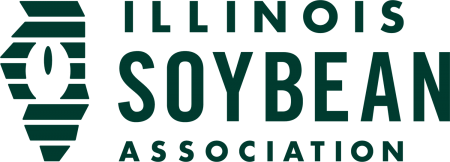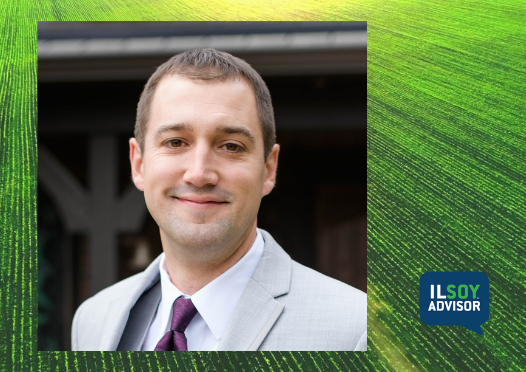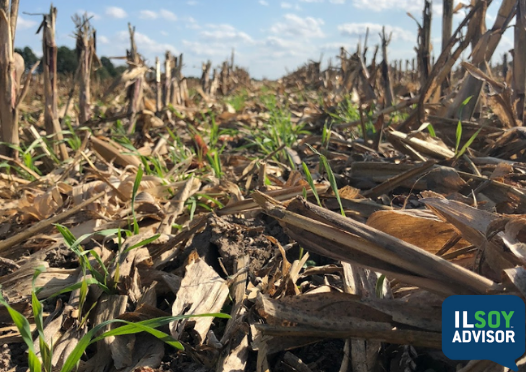ILSOYADVISOR POST
SHOWCASE FARMER: Richard Lyons
The farmer. Richard Lyons has been farming for more than 40 years. Currently, he farms about 300 tillable acres of corn, soybeans (and some wheat) and also farms with his cousin on a 1,200-acre operation. Besides his on-farm work, Lyons serves southwest Illinois as a cover crop specialist for the Illinois Council on Best Management Practices, a role he assumed in December 2014.
Environmental challenge. Lyons’ land in Montgomery County, near Harvel, is located on the upper west side of the Kaskaskia River Watershed. It has a natural drainage stream and drainage ditches that flow into Lake Lou Yaeger, approximately 10 miles to the south. Because of the farm’s location and his concerns about water quality, Lyons works closely with local watershed groups to monitor and improve area water quality. He’s chaired the Lake Springfield Resource Planning Committee for 25 years and serves on the Resource Planning Committee for Lake Lou Yaeger. Lyons’ years of service to the two resource committees resulted from his observations about the negative impact of sedimentation in his local watershed.
After a 1976 study regarding Lake Lou Yaeger, a local Natural Resource Conservation Service district conservationist convinced Lyons to use no-till methods. He began to no-till corn at that time, and in 1988 his operations became 100 percent no-till on corn, soybeans and wheat. Now, he strip-tills corn but maintains no-till for soybeans and wheat.
He’s been studying tile work and water quality for the last two years and found that areas with cover crops have reduced nitrates in water samples about 4.5 – 5 parts per million compared to areas without cover crops.
In addition to creeks and drainage ditches lined with buffer strips to reduce sediment, nitrates and phosphorus from entering their waters, Lyons uses other sustainable farming methods including maintenance fertility based on phosphorus and potassium removed by the previous crop and a management program in which he scouts regularly for insects and weeds in order to apply herbicides, insecticides and fungicides only as needed.
“We especially watch our herbicide program because of cover crops,” he says. “We have to be very watchful so we don’t apply herbicides that are going to diminish the establishment of the cover crops.”
Sustainable focus for 2015. He is conducting a soil health test on two 40-acre fields that are side-by-side; one was tilled two years ago and has been worked twice with deep tillage to reduce tile line depressions, and the other has been no-till for almost 30 years. Lyons wants to understand how long it takes for the recently tilled field to return to crumb soil structure. Both fields will have cover crops, but on the recently tilled field, they will be planted as strips to compare how long it takes the cover crop “to return the field to a healthier soil.”
Sustainable start. Lyons’ recommendation to producers considering new sustainable practices?
Start small. Begin with 10 percent or 25 percent of your acres.
Use combinations of cover crops to add diversity. Consider planting radishes and spring oats prior to corn. Use cereal rye or annual rye grass prior to soybeans. The producer needs to learn the difference between cereal rye and annual ryegrass. Cereal rye is easier to establish and terminate, so it’s best to start with.
As for adopting no-till, Lyons believes the long-term gains are well-worth a year or two of reduced yields, a short-term downside that can be lessened even further with the use cover crops. From his perspective, most producers can’t afford escalating input and equipment costs or rising cash rents, factors that together will cause more and more farmers to adopt low-cost farming methods such as no-till or strip-till.
After long-term use of no-till, there will be no difference in yield, Lyons says. He compares yields and outcomes with other farmers who till, and his yields are nearly identical.





Comments
Add new comment